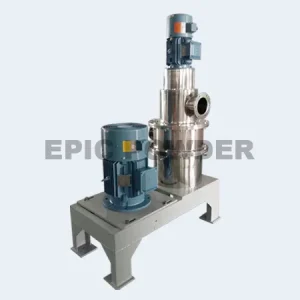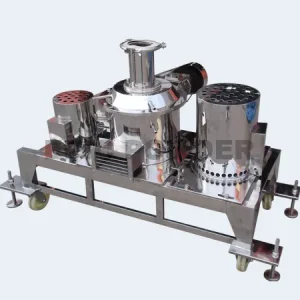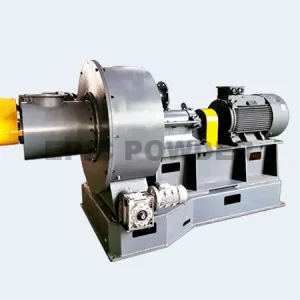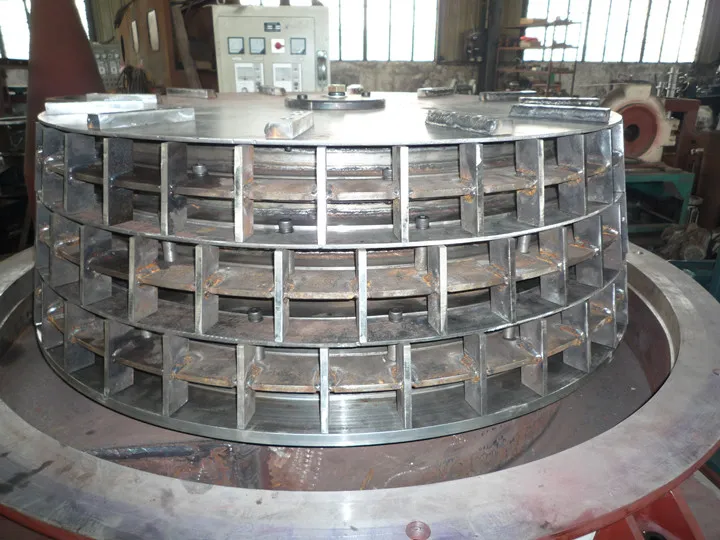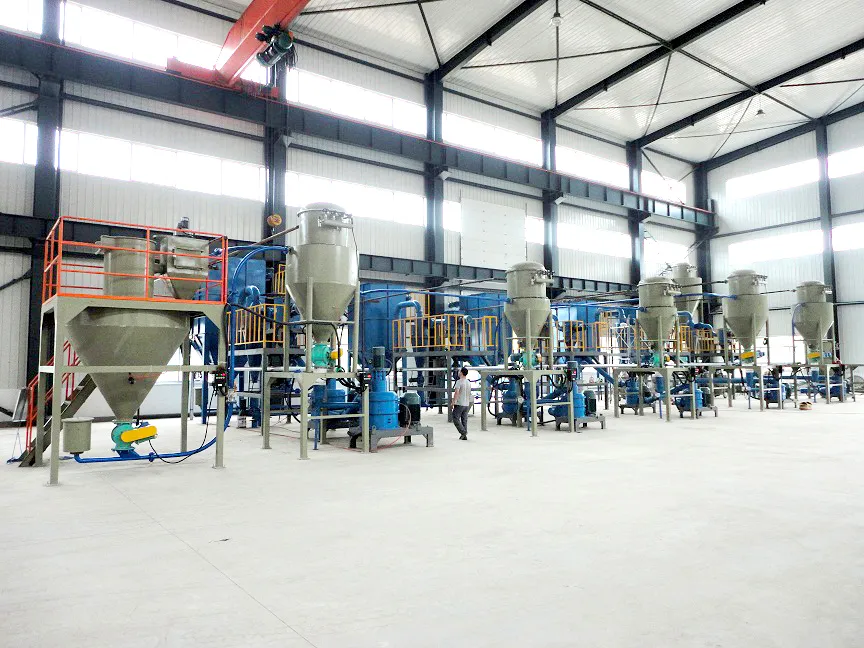Air classifier mills are advanced milling machines that combine the functions of grinding and classifying in a single unit. These mills employ the principles of impact grinding and particle size classification using an integrated air classifier. This article explores the design features of air classifier mills, highlighting their key components and mechanisms that enhance efficiency and precision in particle size reduction
Definition and Operating Principles:
An air classifier mill is a versatile machine used for size reduction and classification of various materials, including powders and granules. It consists of a grinding chamber, an air classifier, and a rotor assembly. The material to be milled enters the grinding chamber, where it is subjected to high-speed impact forces generated by the rotating blades or hammers. Simultaneously, an air classifier located within the mill separates the particles based on their size and density. The fine particles are carried by the air flow and collected in a cyclone or filter, while the larger particles are returned to the grinding zone for further reduction.
Design Features:
Grinding Chamber:
The design of the grinding chamber in an air classifier mill contributes to efficient particle size reduction. Key design features include:
- Size and Shape: The chamber is typically cylindrical, allowing for a uniform flow pattern and distribution of the material.
- Liner Material: Wear-resistant liners made of materials such as rubber or ceramics protect the grinding chamber walls from abrasion and ensure longevity.
Rotor Assembly:
The rotor assembly plays a crucial role in grinding and impacting the feed material. Important design features include
- Blade Configuration: The rotor is equipped with multiple blades or hammers strategically placed to maximize the impact force and facilitate efficient grinding.
- Variable Speed: Some air classifier mills offer adjustable rotor speed, allowing for customization of the grinding intensity and particle size distribution.
Air Classifier:
The air classifier is responsible for classifying the particles based on their size and density. Notable design features include:
- Centrifugal or Gravitational Force: The air classifier utilizes centrifugal or gravitational force to separate the particles. Centrifugal force is generated by the fast rotating rotor, while gravitational force relies on differences in particle density.
- Adjustable Finesse Control: Air classifier mills often allow for precise adjustment of the classifier settings, enabling control over the particle size distribution and finesse of the final product.
Air Handling System:
Efficient control of the air flow and its handling within the mill is crucial for optimal performance. Design features include:
- Air Flow Control: Design elements such as adjustable vanes or dampers regulate the airflow, ensuring proper material transport, cooling, and separation.
- Pneumatic Conveying: Some air classifier mills incorporate a pneumatic conveying system to transport the fine particles to a collection unit, enhancing efficiency and minimizing product loss.
Advantages of Air Classifier Mills:
- Single-Unit Operation: Air classifier mills perform both grinding and classification in a single machine, reducing the need for additional equipment and streamlining the process.
- Enhanced Efficiency: The integrated air classification system increases the efficiency of particle size reduction, resulting in finer and more uniform products.
- Wide Range of Applications: Air classifier mills are suitable for various industries, including pharmaceuticals, chemicals, minerals, food processing, and cosmetics, due to their versatility and ability to handle diverse materials.
- Customizable Control Parameters: The adjustable parameters in air classifier mills allow operators to precisely control particle size, distribution, and fineness, meeting specific application requirements.
Air classifier mills offer efficient and precise particle size reduction and classification capabilities. Key design features such as the grinding chamber, rotor assembly, air classifier, and air handling system contribute to their enhanced efficiency and precision. These mills provide a combination of grinding and classifying functions in a single unit, streamlining the process and reducing the need for additional equipment. With their wide range of applications and customizable control parameters, air classifier mills are valuable tools in industries requiring fine particle size reduction and classification.
